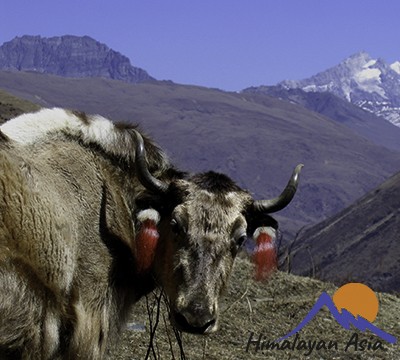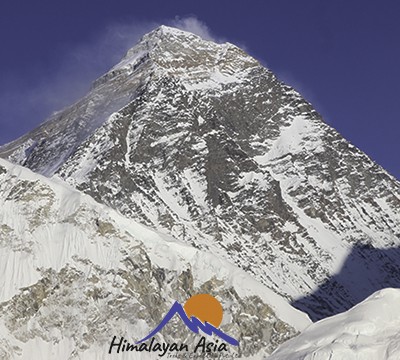Traveling in Winter in Nepal: A Guide by Himalayan Asia Treks
Nepal is a country renowned for its diverse landscapes, rich culture, and majestic Himalayan peaks. While it is a year-round destination, winter offers a unique and magical experience for travelers. For those looking to escape the crowds and embrace a quieter, more serene adventure, traveling to Nepal in winter is an excellent option. With Himalayan Asia Treks, your winter journey can be not only thrilling but comfortable and unforgettable.
Why Choose Nepal in Winter?
Winter in Nepal typically spans from December to February, and while the lower regions experience mild temperatures, the higher altitudes become a winter wonderland, blanketed in snow. Here are several reasons why traveling in winter can be a remarkable experience:
- Fewer Crowds: One of the biggest advantages of winter travel is the lack of tourists. During peak seasons, Nepal’s popular trekking routes can be crowded, but in winter, you'll find yourself trekking in relative solitude, allowing you to connect more deeply with nature.
- Stunning Snow-Capped Views: The winter season provides clearer skies and breathtaking views of snow-covered peaks, particularly in regions like the Annapurna, Langtang, and Everest regions. The crisp, fresh air makes for stunning photographs and mesmerizing sunrises.
- Off-Peak Rates: With fewer tourists traveling during the winter months, many hotels, lodges, and trekking agencies offer off-peak rates, making this an affordable time to explore Nepal's natural beauty.
- Peaceful Spiritual Experiences: For those interested in spiritual journeys, winter offers a peaceful atmosphere to visit Nepal's sacred temples, monasteries, and spiritual sites. The serenity of places like Lumbini, Pashupatinath, and Swayambhunath in winter makes for a reflective pilgrimage.
- Unique Wildlife Viewing: Winter is a great time for wildlife enthusiasts. In the lowland areas such as Chitwan National Park, the cool weather makes wildlife viewing more active. Visitors can spot rhinos, tigers, elephants, and various bird species more easily.
What to Expect in Winter in Nepal
Winter in Nepal varies greatly depending on the region, ranging from moderate temperatures in the lower areas to sub-zero conditions in the mountains. Here’s what you can expect:
- Kathmandu Valley: The capital, Kathmandu, experiences cool and dry conditions with daytime temperatures ranging from 10°C to 20°C (50°F to 68°F). Nights can be chilly, but it's generally comfortable for sightseeing.
- Pokhara: Pokhara, located at a lower elevation, remains mild with temperatures around 10°C to 15°C (50°F to 59°F) during the day. It is an excellent base for short treks and offers beautiful views of the Annapurna and Machapuchare ranges, which are particularly stunning when dusted with snow.
- Higher Altitudes: As you ascend into the mountains, temperatures drop significantly, and conditions become more challenging. In popular trekking destinations like Everest Base Camp, Annapurna Base Camp, and Langtang, temperatures can dip as low as -10°C to -20°C (14°F to -4°F) at night. These conditions require proper gear and preparation.
Popular Winter Treks in Nepal with Himalayan Asia Treks
Despite the chilly weather in the higher altitudes, many trekkers prefer to travel to Nepal in winter to explore its famous trails. Himalayan Asia Treks offers a range of winter trekking options that allow you to experience Nepal’s majestic beauty with expert guidance, ensuring a safe and comfortable journey.
Everest Base Camp Trek
The Everest Base Camp Trek is an iconic Himalayan adventure, and winter brings a special kind of beauty to this already awe-inspiring route. The snow-covered landscapes, the quiet trails, and the brilliant views of Mount Everest and the surrounding peaks make this a memorable trek in winter. Himalayan Asia Treks provides the necessary support, including guides, porters, and equipment to help you navigate the cold, high-altitude conditions. If you're keen on avoiding the crowds, winter is the perfect time to complete this trek in tranquility.
Annapurna Circuit Trek
The Annapurna Circuit Trek is one of the most popular trekking routes in Nepal, and it offers unparalleled views of the Annapurna and Dhaulagiri mountain ranges. During winter, the circuit is less crowded, and trekkers can experience the grandeur of snow-covered landscapes in a peaceful atmosphere. With Himalayan Asia Treks, you can enjoy comfortable tea houses, warm meals, and expert guidance throughout the trek.
Langtang Valley Trek
For those seeking a trek that doesn’t go too high but still offers stunning views of the Himalayas, the Langtang Valley Trek is ideal. The valley is typically less crowded in winter, making it a serene place to explore. The Langtang region is known for its beautiful snow-capped mountains, rhododendron forests, and Tibetan culture. Himalayan Asia Treks ensures that you have the necessary gear and support to trek comfortably in the winter chill.
Ghorepani Poon Hill Trek
For trekkers who prefer a shorter and easier trek, the Ghorepani Poon Hill trek is a fantastic option. Known for its panoramic views of the Annapurna and Dhaulagiri ranges, Poon Hill offers one of the best sunrise views in Nepal. In winter, the weather is cold but manageable, and the trail is peaceful with fewer trekkers. Himalayan Asia Treks provides guides and porters to ensure a smooth trek through this beautiful area.
Manaslu Circuit Trek
If you're looking for something more remote and off the beaten path, the Manaslu Circuit Trek is a great winter option. The trail takes you through high-altitude villages, offering spectacular views of the Manaslu mountain range. With fewer tourists in winter, this trek offers a more authentic experience of Nepal’s mountain culture.
Essential Tips for Winter Trekking in Nepal
Winter trekking in Nepal is an adventure, but it does require some extra preparation to ensure a safe and enjoyable experience. Here are some essential tips to help you prepare:
- Proper Gear: In winter, it’s essential to pack appropriately. Make sure you have high-quality winter gear, including a down jacket, thermal layers, gloves, hat, and warm socks. Make sure your trekking boots are waterproof and insulated.
- Altitude Awareness: Trekking in higher altitudes can be challenging in the winter due to the cold and the reduced oxygen levels. Make sure you acclimatize properly and follow your guide’s advice to prevent altitude sickness.
- Stay Hydrated: The cold can dehydrate you, so it’s crucial to drink plenty of water. Carry a thermos to keep your water warm, as freezing temperatures can cause water bottles to freeze.
- Layering: Dressing in layers is essential. You can add or remove clothing depending on the weather conditions throughout the day. Start with a moisture-wicking base layer, followed by an insulating layer, and finish with a waterproof and windproof outer layer.
- Be Prepared for Early Nights: The days are shorter in winter, so be ready to start your trek early and settle in early for the night. This allows you to make the most of the daylight hours.
- Book in Advance: Winter is a quieter time in Nepal, but it’s still important to book your trek with a reliable company like Himalayan Asia Treks in advance to ensure you have the necessary permits, accommodation, and logistics in place.
Is Winter a Good Time to Visit Nepal?
Winter can be a great time to visit Nepal, especially for travelers who prefer fewer crowds and lower costs. The weather during the winter months (December to February) is generally dry and clear, offering breathtaking mountain views, particularly in the higher altitudes. However, temperatures can drop significantly, especially in the mountains, so it’s essential to be well-prepared for cold weather.
Is Nepal Safe to Travel in December?
Yes, Nepal is generally safe to travel in December. It is a popular time for tourists, particularly those coming for trekking. However, since it is winter, it is essential to be prepared for the cold, especially at higher altitudes. Major trekking routes like the Everest Base Camp or Annapurna Circuit are accessible, but conditions in remote areas can be challenging due to snow. It’s always advisable to check weather forecasts and trail conditions and travel with a reliable guide or tour operator.
Can You Trek Nepal in Winter?
Yes, you can trek in Nepal in winter, but it requires proper preparation. The trekking season in Nepal peaks during the spring (March-May) and autumn (September-November), but winter trekking is still possible, especially in lower-altitude areas. High-altitude treks like Everest Base Camp or Annapurna Circuit can be trekked in winter, but you must be prepared for freezing temperatures, snow, and shorter daylight hours.
Trekking in winter also means fewer trekkers, quieter trails, and stunning snowy landscapes. However, be sure to check with your guide for specific conditions and consider bringing extra clothing and gear.
What is the Weather Like in Nepal in Winter?
In winter, the weather in Nepal varies greatly depending on the region:
- Kathmandu Valley: Temperatures in Kathmandu and the surrounding valley are generally cool, ranging from 5°C to 20°C (41°F to 68°F). Nights can get chilly, dropping to around 0°C (32°F).
- Lower Altitudes: Regions like Pokhara, Chitwan, and Lumbini remain relatively mild, with daytime temperatures ranging from 10°C to 20°C (50°F to 68°F). Night temperatures can drop significantly.
- Higher Altitudes: In the mountains, especially above 3,000 meters (9,843 feet), temperatures can plummet well below freezing. Expect snow, ice, and potentially treacherous conditions in remote trekking areas, especially after mid-December.
Despite the cold, the winter months are characterized by clear skies and crisp air, offering some of the best mountain views of the year.
Conclusion
Traveling to Nepal in winter with Himalayan Asia Treks provides an opportunity to experience the country’s stunning landscapes and unique cultural heritage in a peaceful and less crowded setting. Whether you're trekking in the Everest, Annapurna, or Langtang regions, winter brings a serene beauty and awe-inspiring views that are hard to beat. With the right preparation and expert guidance from Himalayan Asia Treks, you’ll have a memorable and rewarding adventure through Nepal’s winter wonderland.
So, pack your warm clothes, embrace the chill, and embark on a life-changing journey to Nepal this winter.


